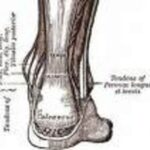Tragedy lives in the throes of consequence and fate, brought about through destructive recognition and the flawed Achilles’ heel that so often plagues classic heroes. An onslaught of tragic elements appear in both Hamlet and The Oresteia. Hamlet’s hamartia in William Shakespeare’s Hamlet leads to his succumbing to corruption and his eventual demise. In The Oresteia by Aeschylus, Orestes’ hamartia takes a slightly different course, causing him to stumble, but not completely fall. The corresponding elements of anagnorisis and peripetia are also prevalent in both plays as each of the heroes is confronted with his unavoidable destiny – to avenge his father’s inequitable murder and reap the consequences of his actions.
Hamlet’s hamartia establishes the precedent for the course of his life and consequently his death. His obsession with revenge and death leads to his downfall; it slowly breaks him, driving him to madness. As Hamlet succumbs to his father’s wishes for revenge he sinks deeper into the ominous abyss, consuming him and driving him towards his inevitable demise. Once he takes the first step of vowing to avenge his father he begins a downward spiral into a world of corruption and deceit that converge on Hamlet as “fate and chance” control the circumstances of his life (Hyde 324). Though Hamlet might seem to be a sympathetic character – seeking to avenge his murdered father – his hamartia revokes some compassion due to the fact that “the change in the hero’s fortune is from happiness to misery… because of some great error on his part” (323).
Orestes’ hamartia is mild by comparison. Orestes is prompted by the need to avenge his wronged father in the same manner as Hamlet. Yet he is able to, in a sense, overcome his downfall and rise above his flaws and fate. He is able to extract justice for his father, yet in doing this he “breaks the god’s first law,” becoming a “godless man who tears his parents’ heart” (Eumenides 170, 153). While this could be seen as the tragic flaw that stirs his hamartia, instead he is absolved from his matricide and “cleared of the charge of blood” (768). He is torn between two sides. He is “the matricide who is also the just avenger of his father” (Roberts 291). In some ways he is guilty by his own hand, his rash actions condemning him and sealing his fate, yet conversely he is also the righteous bringer of justice. The coincidence of circumstance is strikingly similar between Hamlet and Orestes.
However, the progression and the outcome of their descent into tragedy take clearly different courses.
The realization of destiny and fate, and revelation that accompanies this, the anagnorisis, sparks a quest for revenge in both Hamlet and Orestes. As Apollo reveals how Orestes must revenge his father, King Hamlet’s ghost tells Hamlet what he must do. However, they delineate in their acceptance of the revelation; while Orestes readily accepts his quest for vengeance, Hamlet is hesitant, temporarily even reluctant to accept his destiny. They are also quite different in the peripetia in relation to the anagnorisis they undergo. Orestes goes through a temporary peripetia; after what he must do to revenge his father is revealed and the deed is done, he is followed by “these torments… the hounds of mother’s hate” (Libation Bearers 1052-1054). Immediately following his matricide Orestes is thrown into chaos as “women – look – like Gorgons, shrouded in black, their heads wreathed, swarming serpents” begin to follow him and attempt to serve him justice for his crimes. His misfortune, however, doesn’t persist indefinitely. After a short stint of being pursued by the furies and a trial to decide his fate, he is cleared of all charges, absolved of his crimes. His fortune has once again reversed, this time for the better. Hamlet, unlike Orestes, has a far more severe peripetia. Once his father reveals to Hamlet what he must do Hamlet begins to spiral into madness and despair. Peripetia accompanies him throughout his journey as his fortune continues to worsen. During his pursuit of revenge everyone close to Hamlet meets their untimely end, followed by Hamlet himself. While seeking to avenge his father Hamlet has condemned himself. His mission for justice has brought him only bad fortune, “Hamlet, thou art slain… in thee there is not half an hour’s life. The treacherous instrument is in thy hand, unbated and envenomed” (Hamlet 5. 2. 314-318). Although Hamlet succeeds in his task and kills his uncle in revenge for his father, he himself is destroyed in the process, due in some part, to his own obsession and compulsion for revenge. His compelling need to deliver revenge pushes him to the edge, so far that he almost throws himself off. He comes to a point where it seems that “the moral order has been violated; one has to restore it or leave this world” (Kott and Taborski 309). The constant presence of time being out of joint causes Hamlet to wish “that this too too sullied flesh would melt” relieving him from the errant nature of the world (Hamlet 1. 2. 129). Once Hamlet accepts his father’s order he seals his fate. His demise is then inevitable, only its specific nature waits to be found.
To take on an even broader view of anagnorisis’ effects on Hamlet and Orestes one can look at how it afflicts peripetia on not only the hero but all around them. There is a “cycle of vengeance” that surrounds the circumstances of their tragedy (Kott and Taborski 306). Someone is killed, another seeks revenge on the killer, and in turn is sought out for revenge. The cycle continues – a cycle of realization, deed, and turn of fate. In The Oresteia the chain of deaths is ended by the law, through just rule being proclaimed, instead of revenge simply being taken. It was firmly established that “his act was vengeance and not matricide” (Roberts 293). In Hamlet, Hamlet’s death ends the cycle. Once “Fortinbras arrives at Elsinore… order and justice are restored to Mycenae with his arrival” (Kott and Taborski 306). This quest for revenge and the events leading up to it have affected the fates of many people, not only those directly involved.
Tragedy is born through the combination of realization of the unthinkable, an unforeseen downfall of the hero, and the reversal of fortune that accompanies that downfall. The culmination of these elements produces an effect of overwhelming proportions, a tragedy in complete form. It is the blend of these factors that destroy Hamlet and that haunt Orestes. Their lives, destiny, and fate are held in the grasp of elements such as these.



